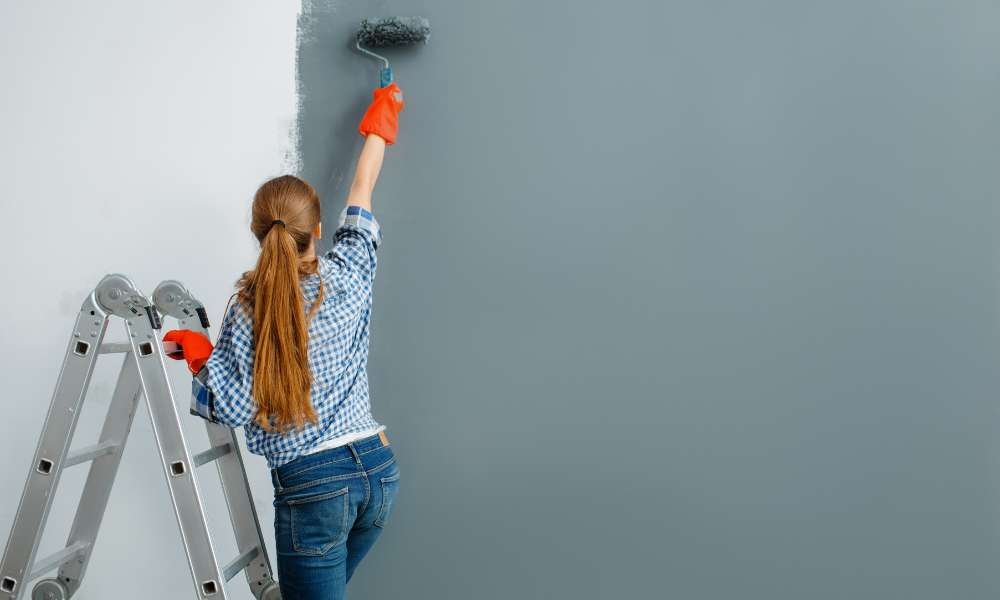Priming a wall before painting is a crucial step that ensures the paint adheres properly and provides a smooth, long-lasting finish. Whether you’re a beginner or a seasoned DIY enthusiast, understanding how to effectively prime a wall can make a significant difference in the outcome of your painting project. This comprehensive guide will walk you through every step of the process, from preparation to the final touches, ensuring that you have all the knowledge needed to achieve professional-quality results.
Importance of Priming
Adhesion
Priming your wall creates a sticky, even surface for your paint to adhere to. Without a good primer layer, paint can peel, crack, or chip off easily.
Color and Sheen Uniformity
A primer provides a neutral base, helping you achieve true paint color and uniform sheen across your painted surface. It’s especially important when covering dark colors or stains.
Increased Durability
A primed wall enhances the durability of the paint job, protecting the wall from moisture, stains, and wear and tear over time.
Materials Needed
- Sandpaper (fine-grit)
- Tack cloth or damp rag
- Painter’s tape
- Drop cloths
- Primer (water-based or oil-based, depending on your paint)
- Paint roller and tray
- Angled paintbrush
- Extension pole (optional)
Preparation Steps
Cleaning the Wall
Begin by removing dust, dirt, and grease from the wall with a mild detergent solution. Rinse with clean water and allow the wall to dry completely.
Sanding the Surface
Lightly sand the wall with fine-grit sandpaper to create a smooth surface. This step is crucial for walls that have previously been painted or have minor imperfections.
Repairing Holes and Cracks
Fill any holes or cracks with spackling compound. Once dry, sand the repairs until they are smooth and flush with the wall surface.
Taping Off Edges
Use painter’s tape to protect trim, molding, and other surfaces you don’t want to prime or paint.
Protecting Furniture and Floors
Place drop cloths or old sheets to protect your furniture and floors from drips and spills.
The Priming Process
Choosing the Right Primer
Select a primer based on the type of paint you’ll be using and the condition of your wall. If you’re unsure, consult with a professional at your local paint store.
Applying Primer
Start by cutting in (painting the edges) with an angled brush. Then, use a roller to apply primer to the rest of the wall. Work in small sections, overlapping each pass for even coverage.
Drying Time
Allow the primer to dry completely before applying paint. Drying times can vary, so refer to the primer’s instructions for specific guidance.
Second Coat (If Necessary)
In some cases, such as when covering dark colors or stains, a second coat of primer may be necessary. Allow the first coat to dry fully before applying the second.
Additional Tips
Ventilation
Ensure your workspace is well-ventilated. Open windows and use fans to circulate air and help the primer dry faster.
Cleaning Up
Clean your brushes, rollers, and paint tray immediately after use, especially if using oil-based primer. Water-based primer can be cleaned with soap and water.
Testing Paint Compatibility
If you’re unsure whether your paint is compatible with your primer or the existing wall surface, perform a patch test in an inconspicuous area.
Taking Your Time
Don’t rush the priming process. A carefully primed wall is the foundation of a beautiful, long-lasting paint job.
Conclusion
Priming may seem like an additional step, but it’s essential for achieving a flawless finish. By following the steps outlined in this guide, you can ensure that your painting project will look professional and withstand the test of time. Remember, preparation is key, and priming is an integral part of that preparation. Happy painting!
